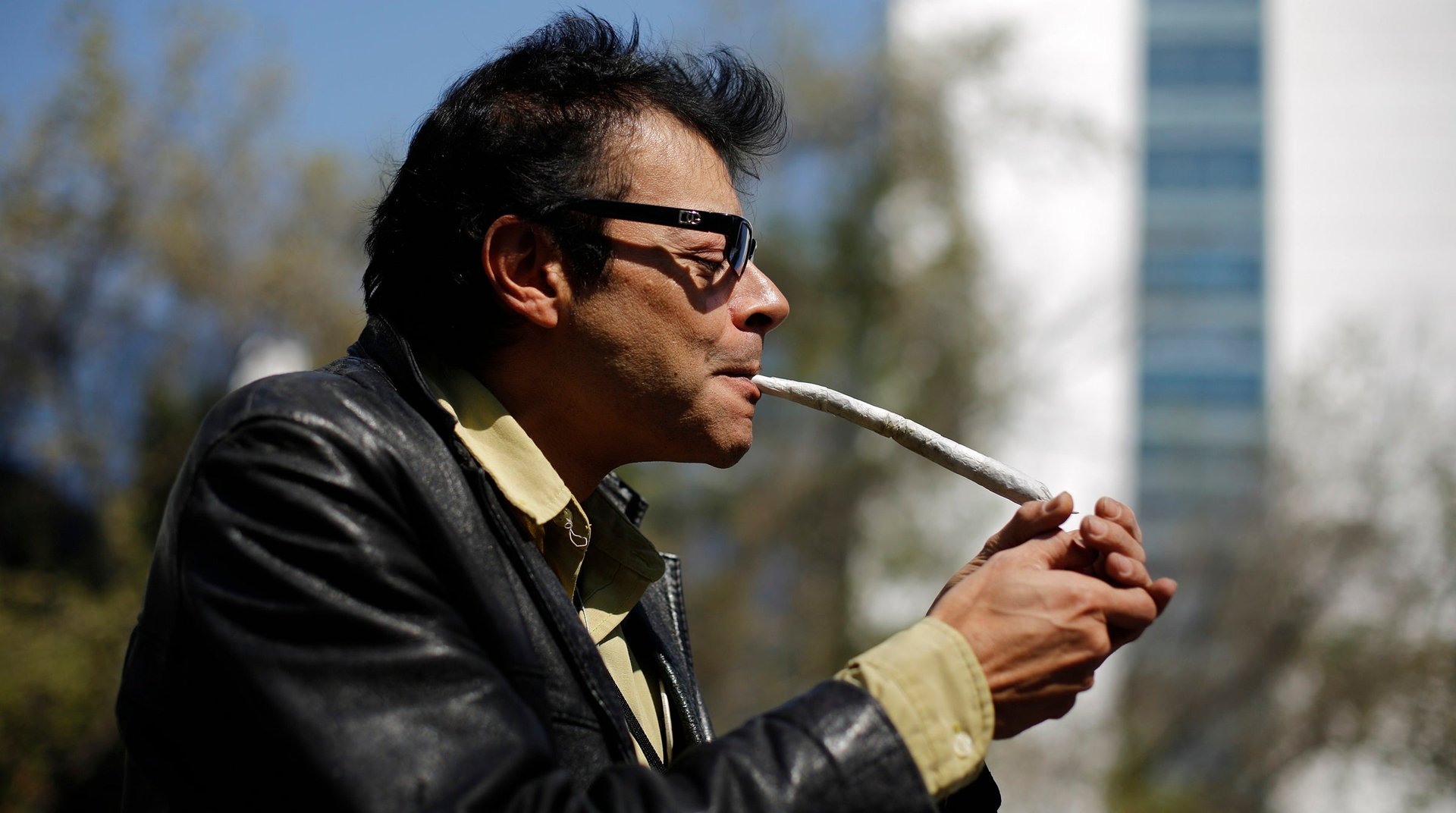When medical marijuana comes to town, everyone’s marijuana may get a little stronger
When you buy a bottle of alcohol, its strength is listed on the label. But in the growing number of US states that allow medical and recreational use of pot, its potency isn’t even regulated, let alone labelled. A new study suggests that the legalization of medical marijuana in particular may have led to more potent, and therefore potentially more dangerous, strains of weed.


When you buy a bottle of alcohol, its strength is listed on the label. But in the growing number of US states that allow medical and recreational use of pot, its potency isn’t even regulated, let alone labelled. A new study suggests that the legalization of medical marijuana in particular may have led to more potent, and therefore potentially more dangerous, strains of weed.
The study measured levels of tetrahydrocannabinol (THC), the main psychoactive ingredient in marijuana, in some 39,000 illegal samples seized in 51 US jurisdictions between 1990 and 2010. It found a slight uptick in potency in jurisdictions that had legalized medical marijuana, and especially in those that created retail outlets for patients.
“Other research has found evidence of an association between higher THC product and negative outcomes,” Eric Sevigny, one of the authors of the study and an assistant professor in criminology and criminal justice at the University of South Carolina, told Quartz. “Things like psychotic breaks, accidents, and hospital visits.”
Sevigny says there is evidence, albeit not conclusive, that marijuana has become stronger in states that have introduced medical marijuana dispensaries. “We’re talking small shifts, from half a percentage point to one percentage point increases in the average levels of THC,” Sevigny said, acknowledging that some of the increase was not statistically significant. “But it’s an important question,” he said, and one that warrants larger investigation. “Under a legal regime, will marijuana become even more potent? Is the quality going to be uniformly superior?”
Even in Colorado, where marijuana is now legal for recreational use, Sevigny said, the black market will keep going for a while because its prices are lower. But if they don’t want to be supplanted by legal dispensaries, dealers will have to start offering more potent grass.
Medical dispensaries aren’t required to test their product for potency, but most of them do anyway. “In Colorado and California, the industry is self-regulating,” Sevigny said. “The dispensaries are self-imposing testing guidelines.” Increasingly, he said, customers go looking for marijuana with lower levels of THC and higher levels of cannabidiol (CBD), which seems to negate some of the bad side-effects of THC, such as memory loss. And consumers in the medical market demand to know the content of their weed, even if the government doesn’t. “The real danger,” Sevigny said, “is that you’ll have first-time users, buying recreationally, who end up smoking really high-grade, potent stuff.”
Sevigny’s study, part of a multi-year project by the RAND Corporation to examine the effects of marijuana legalization, isn’t suggesting that the drug should be illegal. Instead, he said, the studies will aim to inform policymakers and other stakeholders about the potential effects of the drug, allowing them to make medical (and recreational) marijuana as safe as possible should they move to legalize it. “Think of it this way,” he said. “With alcohol, when you go into the store to buy it, you know you can buy beer, wine, or liquor—and you know how potent they are, relative to each other.”
Correction (Jan 24): This article previously stated that Sevigny’s research had found a connection between THC and negative side-effects in marijuana users. In fact, his research was informed by previous studies indicating this connection.